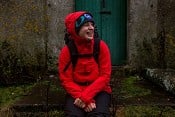Hello! In 2010 I did a climb and down to a unplanned bivy ended up with a a minor frostbite on my toe. Nothing major, no colour changing but they ended up numb for a few weeks. Since them every time I go ice climbing I ended up with my toe getting numb and sometimes it last for almost a month!
I read a lot about it and it seems there’s nothing that can be done and once the damage is done you just have to live with it but i wonder if there are others out there who experience something similar and if there’s something that can be done to
1- reduce the time the numbness persist
2- even avoiding this in the future by somehow improving blood flow, etc…
Already work on getting warmer boots but it seems this happens regardless..
Thoughts and advice always appreciated!
cheers,
Murilo









